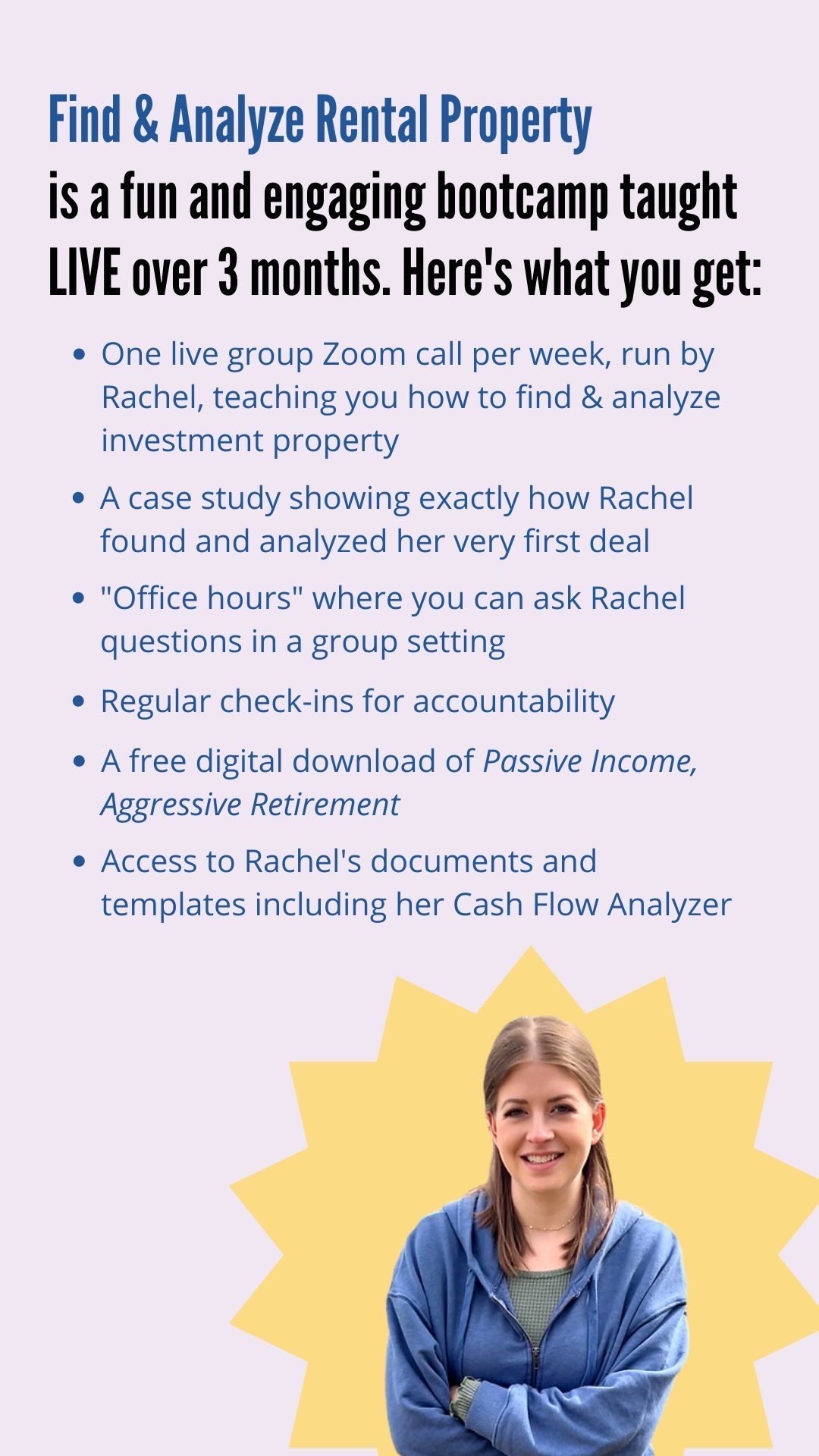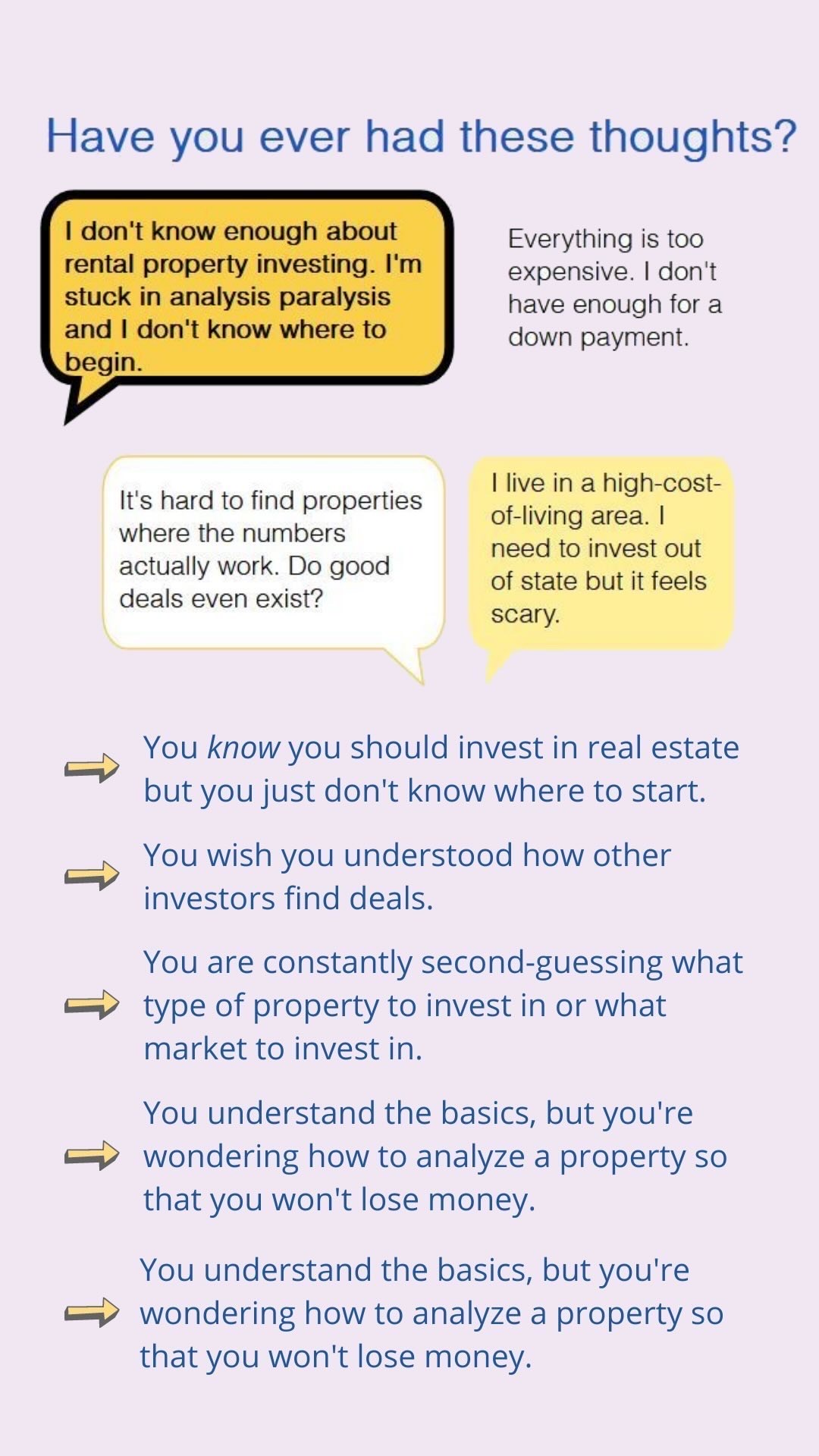 SHOW NOTES FOR EPISODE 624: THE MOST AND LEAST AFFORDABLE U.S. REAL ESTATE HOUSING MARKETS
SHOW NOTES FOR EPISODE 624: THE MOST AND LEAST AFFORDABLE U.S. REAL ESTATE HOUSING MARKETS
Less than half of the homes sold are affordable for middle-class Americans, according to the National Association of Home Builders/Wells Fargo Housing Opportunity Index. But there are still markets that are affordable! In this podcast, Bill will share key markets where homes are both affordable and undervalued, as well as markets where homes are the least affordable.
EDUCATIONAL OPPORTUNITY
Getting a good education on real estate investing is one of the fundamentals required to be a successful real estate investor. A great friend and frequent guest on the Old Dawg’s REI Network Podcast Rachel Richards is hosting an amazing virtual Find & Analyze Rental Property Bootcamp that I just had to share with you all. It you don’t know who Rachel is, here are some of her credentials: Former Financial Advisor. 2X bestselling author. She retired at age 27. She’s a successful real estate investor and entrepreneur who generates $20K/mo in passive income. Here’s some info about the boot camp
If you want more information or want to sign-up now, click here!
___________________________________________
The Most and Least Affordable U.S. Real Estate Housing Markets
Less than half of the homes sold are affordable for middle-class Americans, according to the National Association of Home Builders/Wells Fargo Housing Opportunity Index
Just 48.7% of homes sold could be characterized as being within the financial reach of most middle-class families. That figure is likely even lower today, as it was calculated using home prices from the first quarter of the year and mortgage rates from the end of April. Both have since increased, and mortgage rates are expected to continue to climb.
According to Rose Quint, assistant vice president of survey research at NAHB (the National Association of Home Builders), “Housing affordability is going to be an issue in this country for the foreseeable future because we expect mortgage interest rates to continue to rise,” She goes on to say, “There are going to be many buyers, particularly first-time homebuyers, who will be priced out of the market because of the increases in mortgage rates and also the increases in (required) down payments based on the very quickly rising home prices.”
But despite the rise in prices, there are still many Americans who hope to become homeowners. Every time mortgage rates rise even just a quarter of a percent, about 1.3 million households are priced out of homeownership, according to NAHB.
Quint goes on to say, “Some buyers, who are a little better off, are waiting for competition to let up a little. Demand remains very strong. There are millions of millennial homebuyers out there who have reached their peak homeownership years.”
To come up with its findings for the “most and least affordable metros,” NAHB assumed middle-income families had a median income of $90,000 a year and they used a national median home sale price of $365,000. The group also used a 3.86% mortgage interest rate for the first quarter of the year. A 5.11% average rate from the end of April was used to figure out that less than half of middle-class Americans can afford to buy homes.
Median income data was taken from the U.S. Department of Housing and Urban Development, home sale prices were from data provider CoreLogic, and mortgage rates were from Freddie Mac for 30-year fixed-rate loans.
So let’s get into the results…
In our show notes, the names of the cities/MSAs will be highlighted so you can click on them to see actual Realtor.com listings at and even below the average for that area.
What are the most affordable housing markets in the nation?
The number one most affordable large housing market for middle-class buyers in the first quarter of 2022, according to the index was Lansing, MI. About 92.3% of middle-class locals could afford new and existing homes in the state capital, about a 90-minute drive west of Detroit, according to NAHB. The median home list price in the metropolitan area was about $190,000 in April, according to the most recent Realtor.com® data. (Metros include the main city and surrounding towns, suburbs, and smaller urban areas as well.)
Lansing was followed by Indianapolis, with a median price tag of $300,000; then Scranton, PA, at $215,000; Rochester, NY, at $200,000; and Dayton, OH, at $215,000. These metros all had at least a half-million residents. They’re not job powerhouses. And many don’t have economies as strong as those in larger cities along the coasts. In places where you have relatively more homes for sale and the population is not growing very fast, it’s going to be more affordable. There’s going to be less competition.
The most affordable smaller housing market was Wheeling, WV, about an hour southwest of Pittsburgh, where about 97.3% of middle-class residents could afford a median-priced home of $155,000.
It was followed by Cumberland, MD, with a median home list price of $120,000; Elmira, NY, at $100,000; Utica, NY, at $185,000; and Davenport, IA, at $142,000.
If you’re an investor, I would not just see these lower priced Metros as good investment markets. You’ll still need to do detailed due diligence to make you they have what is required to be a good rental market.
What are the least affordable housing markets?
Now, these places might seem like a big “Duh!” to most of you but there were a few surprises for me…
Every one of the most expensive housing markets, both large and small, were based in California. The Golden State is notoriously expensive, with a median home list price of $750,000 statewide.
Los Angeles, with a median price tag of $950,000, was the country’s least affordable large housing market, with just 8.3% of middle-class residents able to afford a home of their own. The city has held that dubious title for the past year and a half.
Next up was Anaheim, part of Orange County, located south of the Los Angeles metro area, which had a $950,000 median price tag; San Francisco, at $1,098,000; San Diego, at $900,000; and Stockton, CA, at $599,000.
(Some even pricier housing markets didn’t make the top five because locals in these places made higher salaries. This meant they could more easily afford homes in their area.)
The least affordable smaller housing market in the nation was Salinas, CA, about 100 miles south of San Francisco, where just 9.2% of residents could afford the local home prices. The median home list price there was $970,000 in April, according to Realtor.com.
It was followed by Santa Maria, CA, at $1,450,000; San Luis Obispo, CA, at $1,000,000; Napa, CA, at $1,695,000; and Santa Cruz, CA, at $1,275,000.
According to Rose Quitt at the NASB “Housing regulations make building houses in California very difficult. That lower supply of housing drives up prices and harms housing affordability,” She went on to say, “If you have very strong population growth and very limited inventory, it’s going to remain very challenging to buy homes in that area.”
10 Still Affordable Under-the-Radar Housing Markets
The South appears poised to rise again.
The top 10 under-the-radar, more affordable real estate markets that are expected to see some strong home price appreciation are all below the Mason-Dixon Line, according to a recent report from the National Association of Realtors®. These are all places experiencing strong job, wage, and population growth and where homes are still affordable compared with local incomes and the rest of the country.
“They’re hidden gems because they have strong economies and strong job growth and lots of people are moving into the areas, which suggests prices should be higher. But they’re still affordable,” according to Gay Cororaton, a senior economist at the National Association of Realtors (NAR). “So they’re hidden gems for now.” ”
To come up with its list, NAR measured wage, job, and population growth over the past three years as well as the number of housing permits issued over the same period in 379 metropolitan areas. The group also looked at migration and the percentage of the population aged 25 to 44, as well as the percentage of households with broadband service.
Only metros with at least 200,000 residents and positive job, wage, and migration growth were considered. (Metros include the main city and surrounding towns, suburbs, and smaller urban areas.)
Many of the markets on the list are benefiting from the shift by many companies to “remote work’” as buyers feel more comfortable moving farther out into some of these cheaper, secondary cities or into new cities if they don’t have to commute to work five days a week.
“A lot of these markets are close to booming, high-price areas,” Cororaton points out. “We’re starting to see demand spilling into these more affordable markets.”
All of the places had estimated property values below the national median of $297,506 in the second quarter of 2021.
The cheapest metro was Spartanburg, SC, with estimated values of $185,571. The small city, just a half-hour’s drive from Greenville, SC, and about 90 minutes west of Charlotte, NC, is home to a large BMW plant. Homes in the area are also cheaper than in Greenville, where values are about $217,459, and Charlotte, where they are nearly $100,000 more, at $280,645, according to the NAR report.
The most expensive spot was Dallas, where the estimated property value was $293,976. Dallas has become a popular destination over the past few years as large companies like Toyota and Charles Schwab have moved their headquarters to the area, and other big organizations are also expanding there. That has attracted workers who need places to live and is expected to keep housing demand high.
“The economy is driving the market,” says real estate agent Dee Evans, of Ebby Halliday Realtors in Dallas. She doesn’t anticipate prices ebbing until more new homes go up for sale. “What is pushing values is all of the people moving in, and there’s not enough inventory.”
10 Still Affordable Under-the-Radar Housing Markets
Now, the following cities are good areas for real estate investors to consider because they are more affordable than higher priced metros close by and you may find great underpriced or soon-to-appreciate deals. You’ll also have to do your due diligence to see if they are good rental properties.
In alphabetical order, they are… (Click to see actual houses for great prices in these markets)
- Dallas, TX
- Daphne, AL
- Fayetteville, AR
- Huntsville, AL
- Knoxville, TN
- Palm Bay, FL
- Pensacola, FL
- San Antonio, TX
- Spartanburg, SC
- Tucson, AZ
References:
- https://www.deseret.com/u-s-world/2022/5/18/23124651/housing-market-prices-mortgage-demand-interest-rates-is-there-a-bubble-crash-coming-utah-west
- https://www.usnews.com/news/business/articles/2022-05-19/home-sales-tumble-again-as-mortgage-rates-surge
IF YOU LIKED THIS PODCAST, we would love if you would go to iTunes, Stitcher, GooglePlay, iHeartRADIO and Spotify and Subscribe, Rate & Review our podcast. This will greatly help in sharing this podcast with others seeking to learn real estate investing as a means to achieve a successful retirement.
Check out our other podcasts at olddawgsreinetwork.com.
Get a FREE copy of our 3-Minute Rental Property Analyzer at olddawgsreinetwork.com.
Additional Episode Sponsor: Meno Studio – menostudio777@gmail.com




